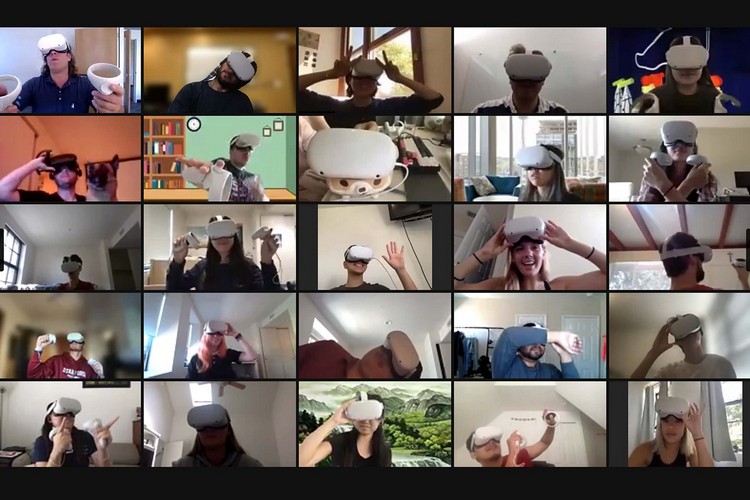
With the inception of the COVID-19 pandemic, digital learning got a new meaning to it as most schools, colleges, and educational institutions started relying on video conferencing to conduct classes. However, Stanford University recently took it up a notch as a University professor recently conducted a course-class session entirely in virtual reality (VR), a first in the institution’s history.
A professor of Communications at Stanford University, James Bailenson has been teaching the University’s Virtual People course since 2003. However, he recently took a gamble when he decided to conduct the course entirely in VR, without knowing whether the technology required for it would be ready or not. Thankfully, the software, dubbed Engage, which was used to conduct the first-ever VR class was ready for Bailenson to use by the time of the summer session of the Virtual People Course.
Engage is essentially the driving force of the VR class that enables students and teachers to interact with each other in a virtual space. It is very similar to what Meta is trying to achieve with the Metaverse ecosystem. Students and teachers have already spent over 60,000 shared minutes in the VR environments as part of the Virtual People course during the summer session. They are projected to spend about 140,000 shared minutes during the fall session of the Virtual People course.
“In Virtual People, the students don’t just get to try VR a handful of times. VR becomes the medium they rely on. To the best of my knowledge, nobody has networked hundreds of students via VR headsets for months at a time in the history of virtual reality, or even in the history of teaching. It’s VR at an incredible scale,” said Bailenson in an official press release.
Furthermore, Bailenson designed the classes in such a way so that students would not experience simulator sickness. So, each of the classes was limited to 30-minute sessions. Plus, to protect the privacy of students, Bailenson asked Meta-owned Facebook to allow students to use fake accounts when logging in for the VR classes. In return, the professor promised to use Oculus’ (another Meta-owned company) VR headsets to conduct the classes.
If you want to know about Standford’s Virtual People course and how Bailenson and his teaching staff were able to transform their classes into interactive virtual spaces, you can check out the official press release of the course from right here. Also, let us know your thoughts about classes being conducted in virtual reality (VR) in the comments below.